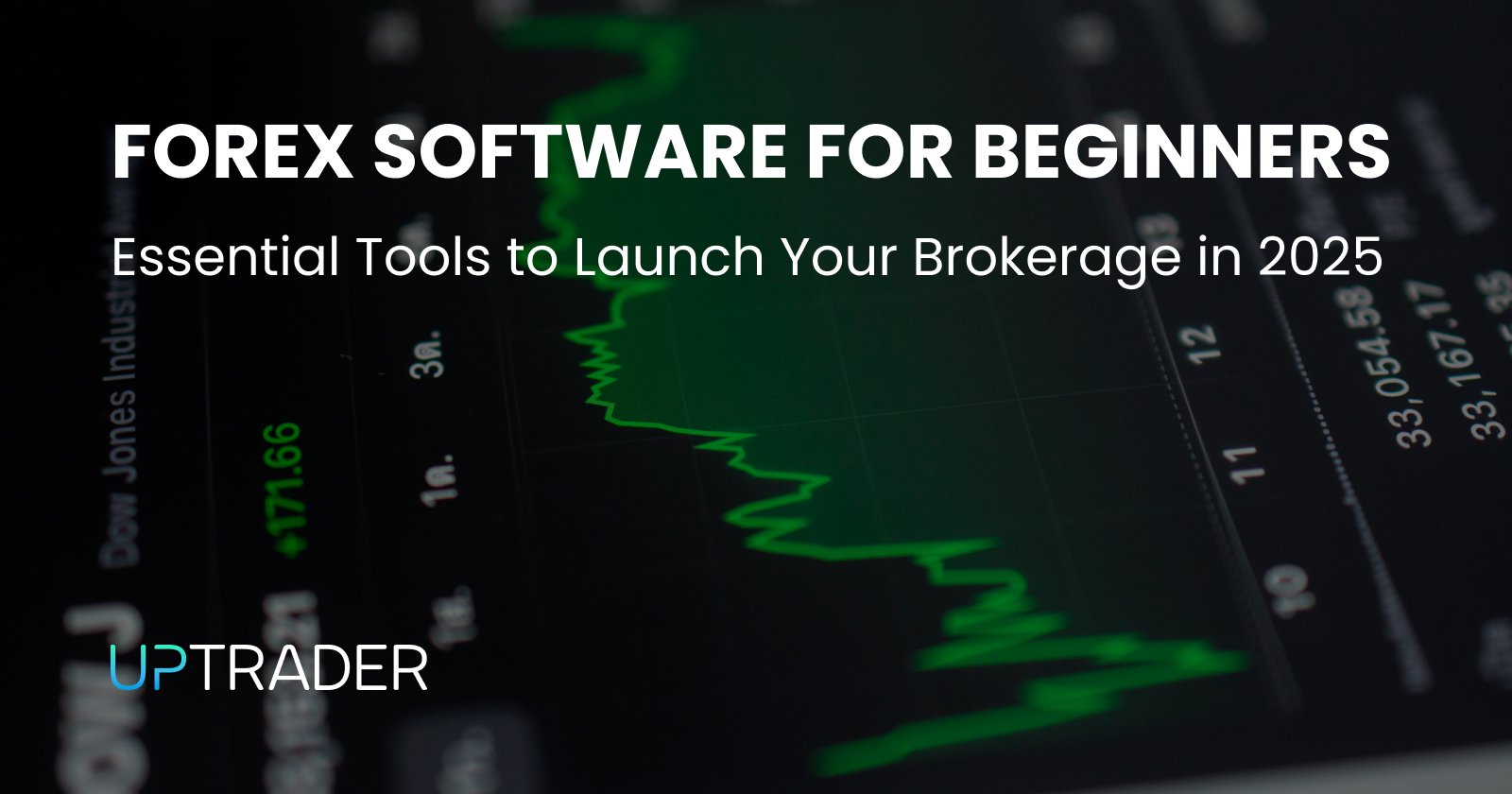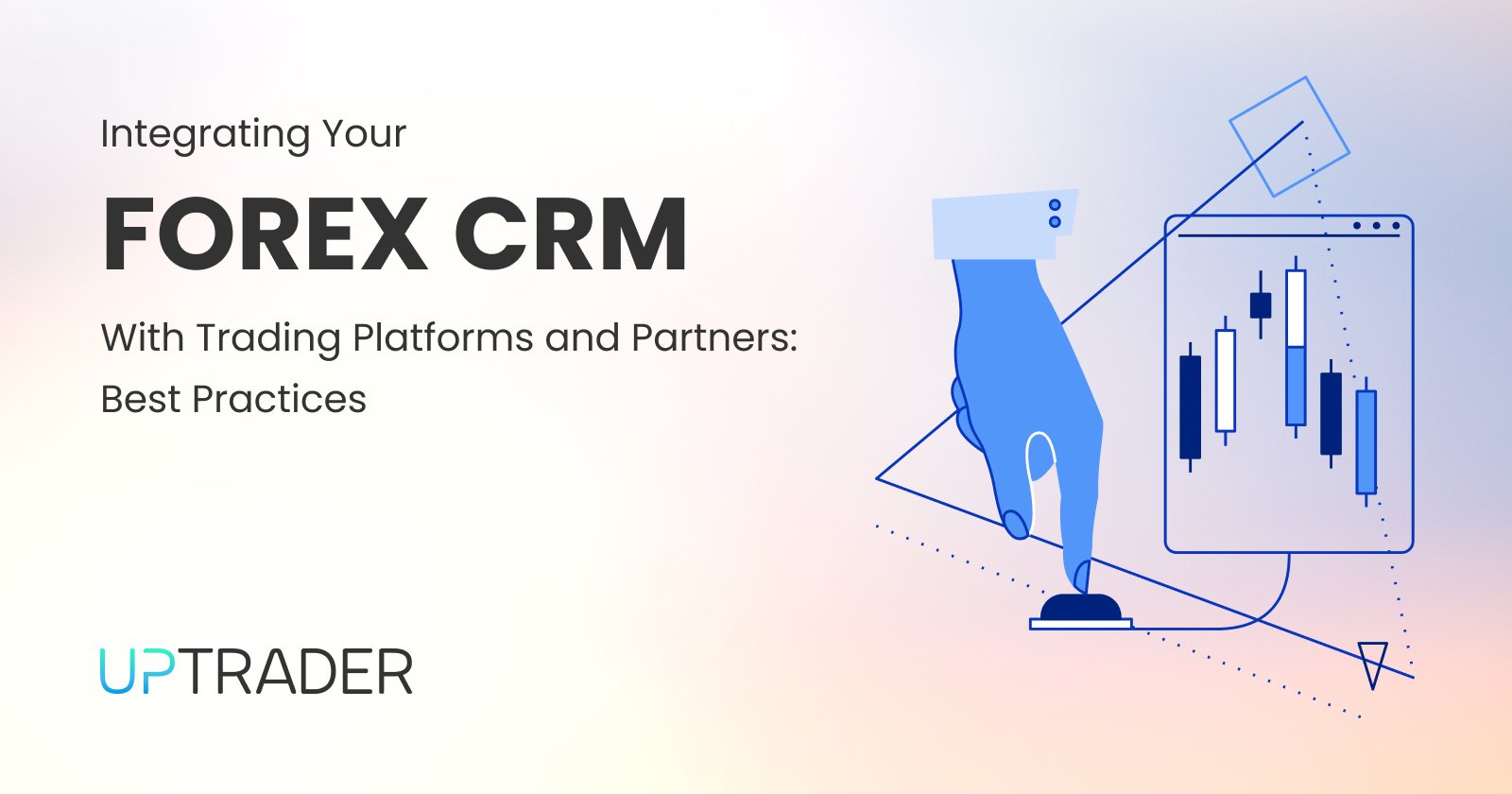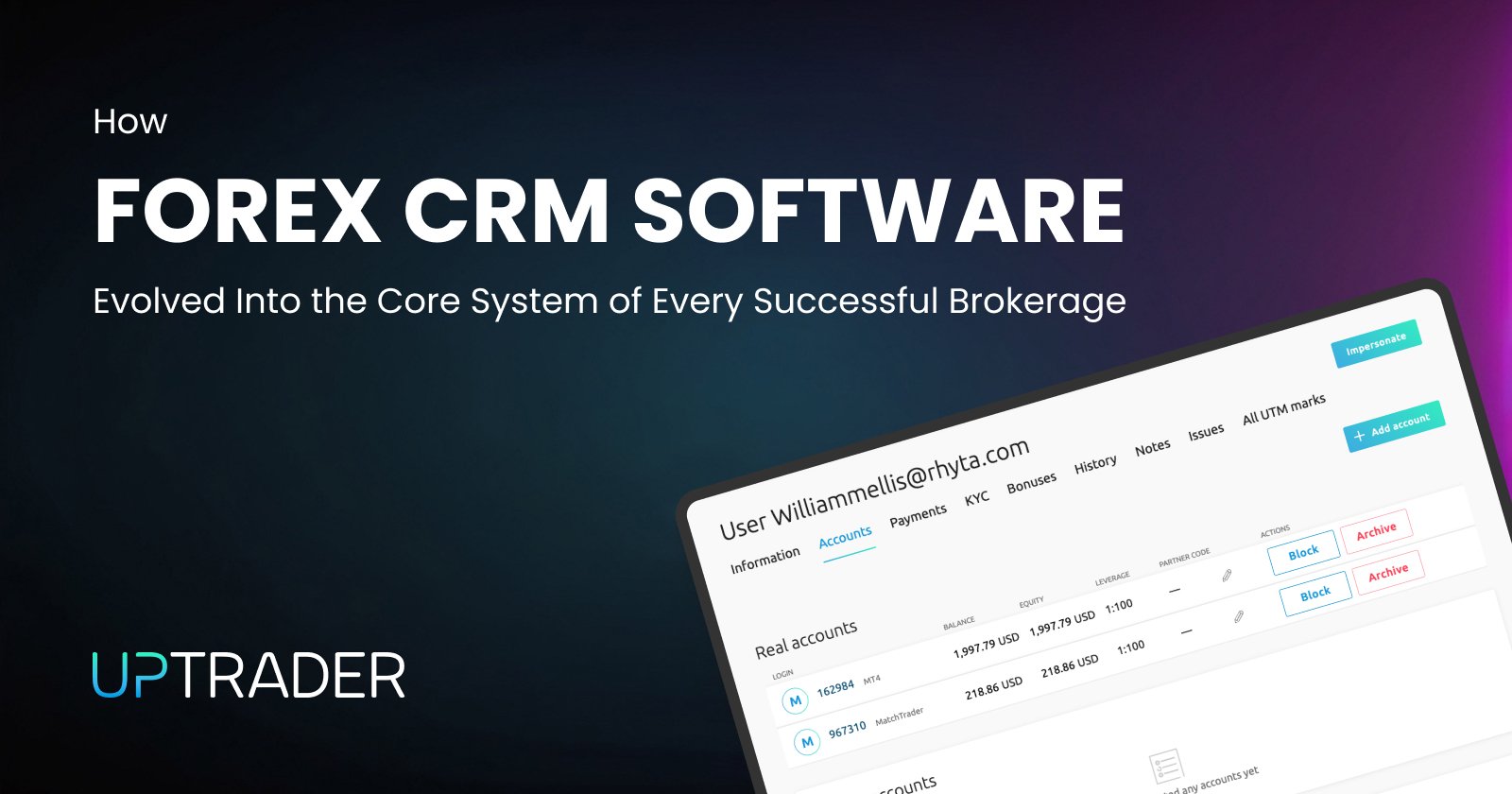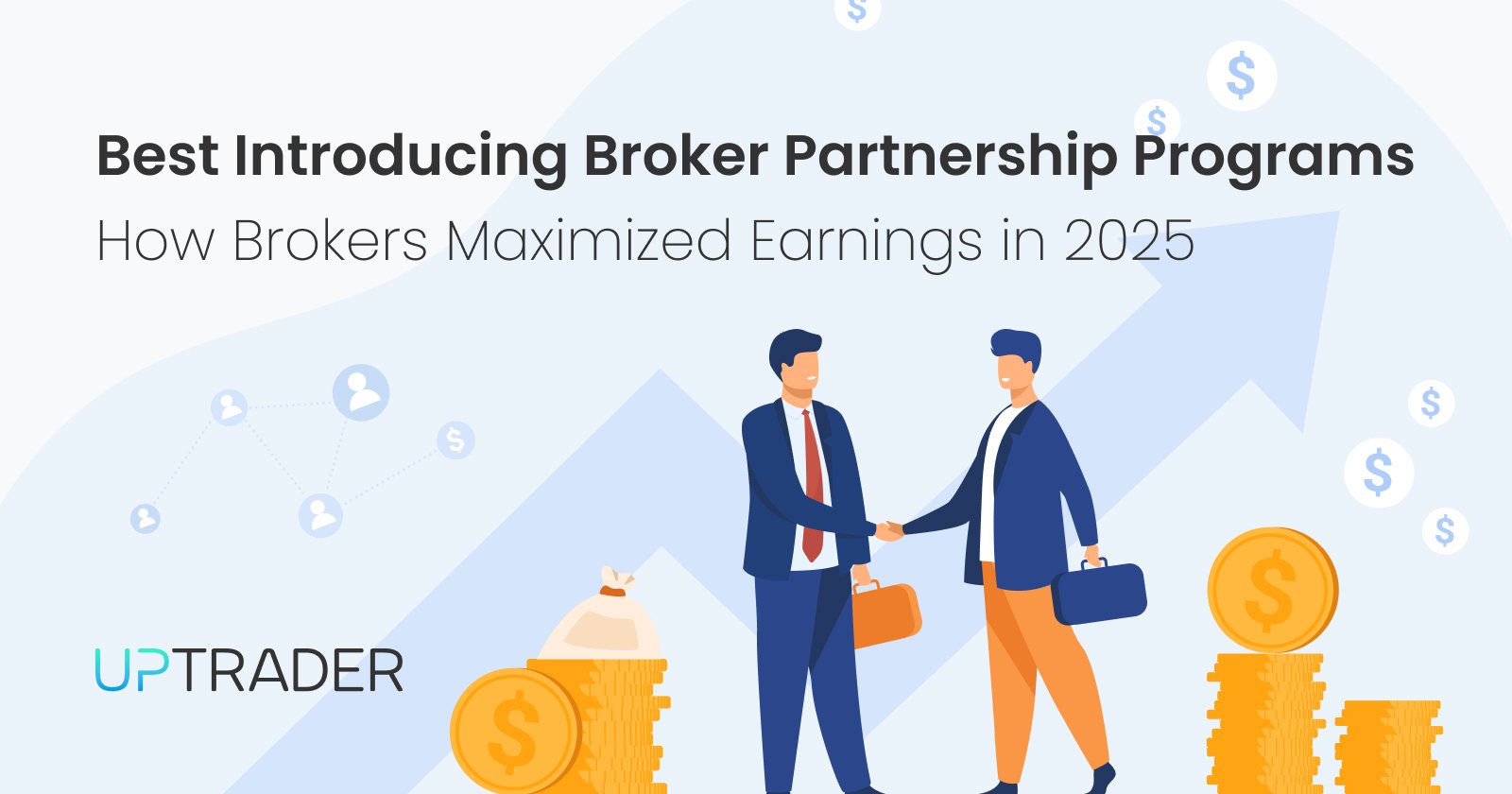Forex Software for Beginners: Essential Tools to Launch Your Brokerage in 2025

Share this publication:
If the blueprint for your 2025 forex brokerage is already on your desk, you’re probably rifling through licensing, liquidity, and finishing of the front-end site. Pause for a second: all of that is secondary. The enterprise is a technology engine, from the trade knobs your clients touch to the unseen systems that ensure regulatory peace and billing runs on time, which makes forex software primary.
The principal dilemma for a startup is distinguishing software that is compulsory from what can wait on the shelf.
This guide cuts the haze. We’ll catalog the forex tech every rookie broker must plug in as of 2025, offering a job-by-job summary of what that software does and how each piece clicks into one another to form a coherent, flexible operating spine.
Why Software Makes or Breaks a Forex Brokerage
Running a brokerage isn’t just about letting traders open accounts and place orders. You’re managing client onboarding, deposits and withdrawals, compliance checks, risk exposure, reporting, and partner payouts — all in real time.
The right software does three things:
- Keeps you compliant – Regulations around KYC, AML, and client data privacy are strict. Your systems must help you stay on the right side of local and international rules.
- Delivers smooth client experiences – A laggy platform, clunky onboarding, or delayed payments will kill trust fast.
- Gives you control – From risk management to reporting, you need visibility across the business so you can make informed decisions.
Think of your brokerage as an orchestra. Each instrument (trading platform, CRM, payment gateway, risk system) must play in sync — or you’ll just get noise.
The Core Forex Software Stack for New Brokers in 2025
1. Trading Platforms (Trading Platform 4/5, and Alternatives)
Traders devote nearly all their hours to the platform, so the pick must feel comfortable yet future-proof.
- Trading Platform 4: Usual household name. Its one-click simplicity and a mountain of free indicators keep it alive, even if the code creaks.
- Trading Platform 5: Fresh architecture under the hood, multi-instrument support, micro-spread DMA, and ticks pool orders like a pro, turning latency into a detail.
- Alternatives: NinjaTrader’s optimized layout, Match-Trade’s slim brokerage costing, and other tailored white-label builders are nudging their way onto menus.
Brokers craving a responsive UI, killer speed, and rain-proof risk tools push these newcomers up the shortlist. Newly licensed broker? TP5 still hugs the demo population, yet light-switch-ready white-labels offer the same lift without the legacy ballast — proven feel today, code-ready for tomorrow.
2. Forex CRM (Client Relationship Management)
If the platform trades for the storefront, the CRM does the heavy lifting out of sight. It wrangles leads, sketches trader profiles, pushes welcome emails on 24-click speed, and automates deposits/withdrawals, even on weekends — no one wants a manual data-entry hangover at midnight on a bonus week.
A solid forex CRM in 2025 should include:
- KYC/AML verification workflows.
- Multi-level partner and IB management.
- Segmentation and marketing automation.
- Back-office dashboards for deposits, withdrawals, and bonuses.
Platforms like UpTrader CRM, Leverate, and B2Core are popular choices for brokers who want reliability and built-in integrations.
3. Trader’s Room / Client Portal
This is the web or app interface where clients handle everything outside of trading:
- Registering accounts.
- Uploading documents for KYC.
- Deposits and withdrawals.
- Internal transfers, bonuses, and reports.
A frictionless trader interface is a cornerstone of credibility; if deposits or withdrawals feel slow or awkward, users move on.
4. Liquidity & Bridge Software
Liquid markets are the backbone of efficient execution; only then can your clients access tight spreads on the exchanges they expect. But to connect your trading platform with liquidity providers, you’ll need a bridge.
Bridge software handles:
- Order routing.
- A/B book management (deciding whether to internalize trades or send them to the market).
- Risk controls and reporting.
Typically, this comes packaged with liquidity provisioning deals, yet the real test is how tightly the plug-in binds with your core trading terminal.
5. Payment Gateway Integrations
Your clients come from all over the world. They want fast, secure funding options — cards, bank wires, e-wallets, and increasingly, crypto.
By 2025, a compliant property should connect:
- Global options like Visa, Mastercard, and conventional bank transfers.
- Regional champions such as M-Pesa in Africa, UPI in India, and the e-wallet networks across SEA.
- Dedicated crypto entry points for Bitcoin, USDT, and Ethereum, delivering near-instant borderless credits.
Your CRM and trader’s room should connect seamlessly with these gateways so clients never hit a dead end.
6. Risk Management & Dealing Desk Software
This is where you protect your bottom line. Risk management tools let you:
- Set exposure limits.
- Monitor real-time positions.
- Switch between A-book (external liquidity) and B-book (internalizing trades) strategies.
- Spot toxic flow or arbitrage trading before it damages profits.
A beginner broker might start with simple risk dashboards bundled in with CRM or liquidity services, then expand to specialized tools as volumes grow.
7. Affiliate & IB Management Software
Partner programs are the lifeblood for new brokers. But managing dozens — or hundreds — of affiliates manually is impossible.
The right system automates:
- Multi-level IB hierarchies
- Lab-configurable commission plans (CPA, revenue share, hybrid)
- A single pane showing referrals, deposits, and payout timestamps.
Most modern forex CRMs package the affiliate tier, yet some firms plug in dedicated engines for granular oversight.
8. Compliance & Reporting Tools
By 2025, shops will be compelled to deliver automated transparency. Look for a solution that:
- Generates daily and monthly revenue lines, transaction logs, and client hit-lists,
- Rings the bell for AML outliers
- Dovetails with regional tax and audit frameworks.
Picking a CRM with baked-in compliance workflows pre-empts unpleasant inspections.
Optional but Valuable Add-ons
Once the essentials are in place, you can consider:
- A social and copy platform that lets rookies shadow pros, boosting retention; a BI and analytics suite that drills into client choice and net profitability;
- White-labeled mobile clients for trading and funding en route.
- A hosted academy, complete with embedded webinars, that keeps the learning curve steep and churn shallow.
White-Label Solutions vs. Building In-House
When starting out, many beginner brokers face the “build vs. buy” dilemma.
- White-Label Packages: From UpTrader to Leverate, you’ll find tier-one TP5, a fully integrated CRM, ready liquidity, and a set of payment gateways, all bundled in a tested package. Go live in weeks instead of months, and the initial cash burn stays far lower.
- In-House Builds: This option is pricier and takes more time, but it offers absolute control and the ability to craft features to fit specific needs. Most big brokers go this way, using existing capital.
Presently, white-label is generally the wiser option for a new broker; later, as the business expands, you can migrate to custom solutions.
Key Considerations When Choosing Software
- Integration: Ensure the platform, CRM, and payment systems exchange data smoothly; if not, you’ll waste time and trade risk.
- Scalability: Begin small, but confirm the architecture can grow to accommodate thousands of clients.
- Compliance: Select partners with built-in regulatory processes for each target region.
- Support: Whether it’s scripting adjustments, a UI tweak, or dealing with a spike in server load, tech teams stay awake while quotes keep flowing. A fifteen-minute hiccup risks a trader’s shirt and the firm’s reputation.
- Cost vs. Value: The lowest price is rarely the best option; a single, dependable server can save more than a budget solution that fails.
A Roadmap for Beginners in 2025
Step 1: Define your brokerage model. You must decide between A-book, B-book, or hybrid, then target the regions where you intend to grow, testing liquidity conditions, tax issues, and marketing reach in each.
Step 2: Pick your trading platform. Choose the safest entry points for broad client appeal.
Step 3: Get your CRM + Trader’s Room. This is the operational brain of your brokerage — don’t compromise here.
Step 4: Secure liquidity & payments. Without smooth order execution and deposit/withdrawal options, clients won’t stay.
Step 5: Layer in risk management and affiliate systems. These let you scale while protecting margins.
Step 6: Add value with extras. Social trading, education, and analytics can come once your core stack is stable.
Final Thoughts
Launching a forex brokerage in 2025 is as much about technology as it is about marketing and regulation. The good news is, you don’t need to reinvent the wheel — there are proven software solutions built exactly for this purpose.
Start with the essentials: trading platform, CRM, trader’s room, liquidity, and payments. Make compliance a non-negotiable, and pick vendors that can grow with you. Once you’ve built that foundation, you can layer in risk management, affiliate tools, and social trading features to scale.
Get the software stack right from day one, and your brokerage won’t just survive in 2025 — it’ll thrive.
If you're looking for a powerful and comprehensive Forex CRM system that covers all these essential features and more, UpTrader CRM is the solution for you. Ready to take your brokerage to the next level? Contact a consultant on our site today to schedule a demo and see how UpTrader CRM can transform your business!







